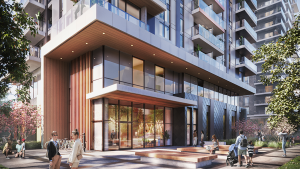High demand, a recovering economy and constrained supply are creating an affordable housing crisis across Toronto and the Greater Toronto Area, but there are mechanisms that could help.
Digitization, streamlining the development approvals process and getting stakeholders and government to the table is the key to getting more affordable housing built faster, said industry leaders during a recent online conference.
The webinar, Post-pandemic housing supply and affordability, what can the government do? was held June 22. It is the first session in the One Ontario Conference Series, which will explore opportunities to streamline the development application approval process.
“We’ve got some very significant upward pressure on the housing prices,” said Mauro Ritacca, senior manager of government relations at the Toronto Regional Real Estate Board. “Affordability is definitely a challenge not just in Toronto but across the GTA. The COVID situation has exacerbated but it’s really not just a COVID story. It’s going back a number of years and the real underlying issue is on the supply side.”
One of the factors that affects the demand for housing is immigration and although that has slowed over the past year with the pandemic, it is expected to pick back up.
Variety of housing supply needed in cities
Pino Di Mascio, head of impact strategy and delivery at Dream, said cities function better when there are mixed income communities and a variety of housing types that match peoples’ needs.
“In cities, we’ve been seeing over the past couple decades…housing is just becoming more expensive and it’s taking more and more of people’s incomes to support their housing costs,” said Di Mascio. “In Toronto there is a lot of talk about the missing middle that is starting to spread to other cities as well.”
One of the biggest challenges in getting housing built in the city is the development approvals process, which can take anywhere from three to five years depending on where you are in Ontario and what you are building.
“We need to make housing supply much more elastic, which basically means reducing the approvals timeline and that’s really what One Ontario seeks to address,” said Paul De Berardis, director of building science and innovation at the Residential Construction Council of Ontario. “If it can cut six months or one year out of a three- to five-year government approval process, the amount of housing that can supply, the amount that boosts the Ontario economy, that’s huge. Unless we can meaningfully tackle a way to bring housing to market sooner we’re all just going to keep spinning our wheels.”
What can the government do?
Established by AECO Innovation Lab, the One Ontario initiative aims to establish a set of provincial guidelines for data and information exchange throughout the development approval process which would be aligned with regulatory requirements set by the province.
“It doesn’t matter how much you invest in individual digitization efforts. If the systems don’t talk to each other we are losing a lot of efficiency and that is the proposal that One Ontario has in front of the government,” said Arash Shahi co-founder and CEO at AECO Innovation Lab, moderator of the discussion. “Let’s create open data standards supported by the government so that we can all build our solution based on the standards.”
Mary Ellen Bench, senior adviser at StrategyCorp and counsel at Dentons, said a digitized system would be helpful.
“I think you will get a lot of buy in because there is frustration throughout the system with everybody. The need is definitely there to come up with a solution that is the same, that is standard, that is digitized,” she said. “It’s the right answer for the government as well as for the private sector.”
A more efficient system is needed to get more affordable housing built.
“Residential should be affordable for anyone that can support it,” said Nick Gefucia, vice-president, affordable housing at EllisDon Capital.
“In short, it’s just figuring out how to move the committed funds from the federal government into the administrative programs that are set up by government and by the stakeholders and to build because that’s where we need to get. That’s why the supply gap exists.”
All panellists agreed the missing middle, housing for middle class income levels, is an increasing issue and workers cannot afford to live close to where they work.
“If government truly wants to build the missing middle, which the market has shown that they want that especially 500 to 1,000 metres outside transit stations, they have to make the process more streamlined, more efficient,” said De Berardis. “It can’t be faced with the same opposition and challenges as much larger developments.”
Shahi said stakeholders and governments need to come to the table to discuss solutions.
“The message we really want to get across today is the industry is here, we are ready to help and we want to engage. We are just missing that leadership that is required,” he said. “International best practices in all jurisdictions where they have done this successfully, it has always been a top down support system. It does have to come from the top and it does need to come with support.”
Follow the author on Twitter @DCN_Angela.











Recent Comments
comments for this post are closed